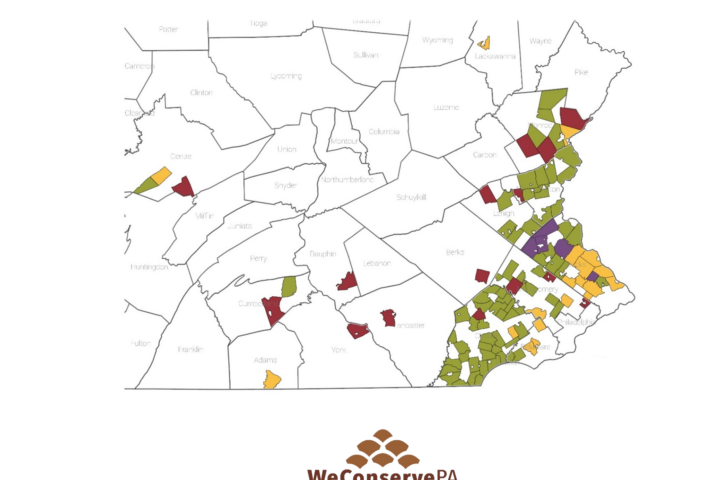WeConservePA recently updated two guides relating to stewardship funding arrangements, including private transfer fees: Stewardship Funding Arrangements: Options for Financing the Obligations of Conservation Easement Holders; and, Legal Considerations for Stewardship Funding Arrangements: Binding Present and Future Landowners to Present Promises.
Stewardship Funding Arrangements: Options for Financing the Obligations of Conservation Easement Holders
When landowners grant a conservation easement, they empower the easement holder to uphold the easement’s conservation objectives. The holder’s exercise of the power—the property monitoring, reviews, enforcement actions, and other stewardship activities in support of the objectives—requires money.
To finance stewardship, most land trusts collect from the owners a single contribution at the time the conservation easement is granted. The contribution is invested, with the returns used to fund the land trust’s routine stewardship activities; the principal typically is left untouched, except if needed to fund enforcement actions.
A contribution of sufficient size to cover the holder’s long-term stewardship costs, if required in its entirety at the time of easement acceptance, is not affordable for many prospective donors. However, bringing the contribution down to an affordable level will leave a funding shortfall, impairing the holder’s ability to effectively provide stewardship in the long run. The key to achieving both affordability for the owners and adequacy for the holder is to spread payments in support of stewardship over time. A variety of stewardship funding arrangements are available for this purpose.
Legal Considerations for Stewardship Funding Arrangements: Binding Present and Future Landowners to Present Promises
A promise made by a landowner to make one or payments to support stewardship of her property is relatively easy to document and enforce. More challenging is making a promise made by the landowner enforceable against successor landowners. In either case, an understanding of what makes promises binding is critical for crafting stewardship funding arrangements that are enforceable over time.
The guide Stewardship Funding Arrangements: Options for Financing the Obligations of Conservation Easement Holders provides an overview of the variety of funding arrangements that are available to landowners and easement holders to ensure that holders can meet their stewardship obligations over time. This companion publication delves into the legal matters, research and analysis that underpin the approaches taken in that guide and in the Model Stewardship Funding Covenant with Commentary.


